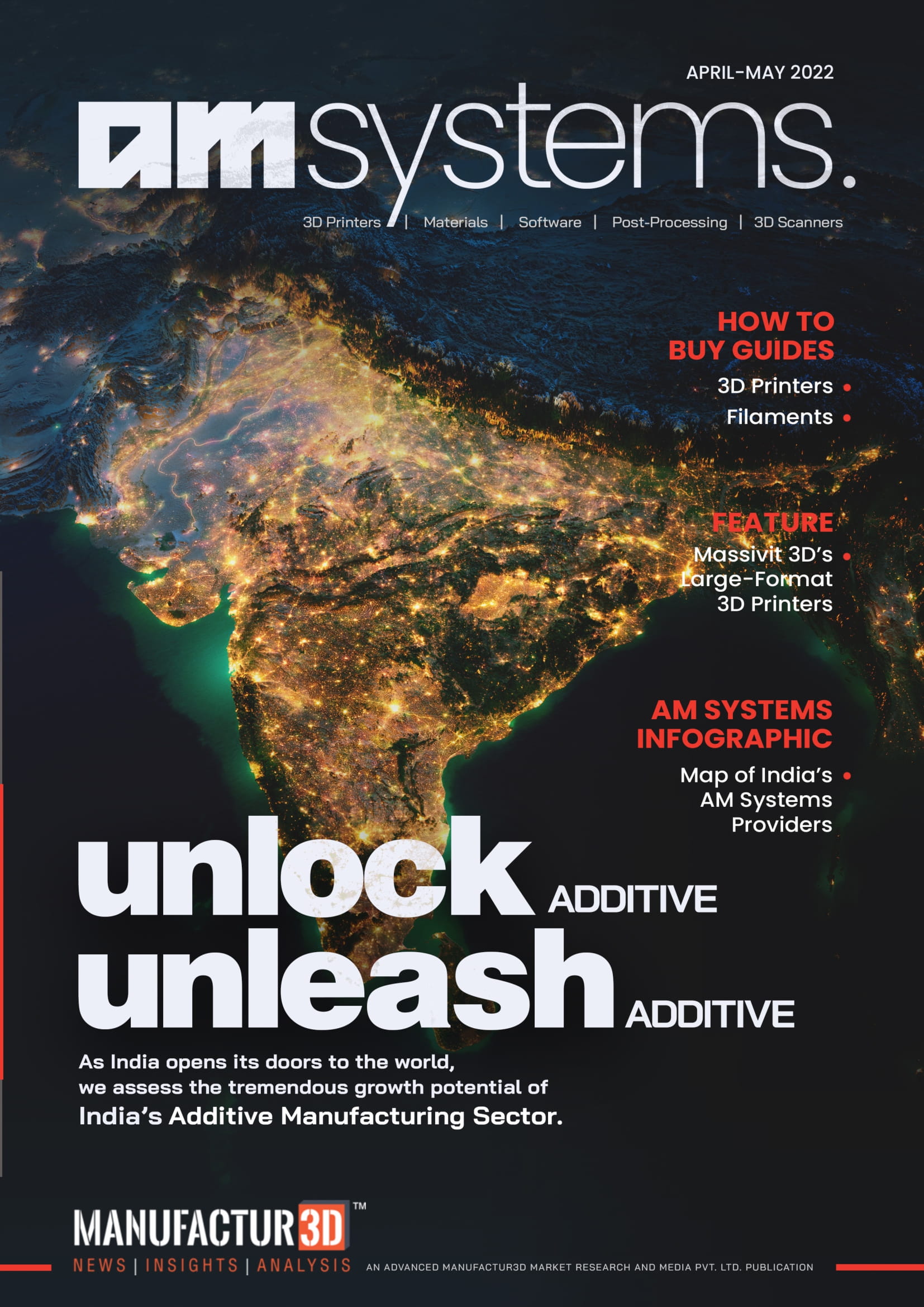
Above: Working prototype of Inverted multi-material laser sintering/Image Credit: Columbia University
An experiment led by Prof. Hod Lipson, a roboticist at New York’s Columbia University, and his PhD student John Whitehead, has resulted in the development of a new approach to overcome limitations of selective laser sintering (SLS) technology. The new approach, termed as Inverted multi-material laser sintering, also enables multi-material 3D printing.
THE PROBLEM
Additive manufacturing is a rapidly growing field and over the past three decades new technologies and approaches have focussed on eliminating the limitations and making the technology more accessible and feasible to production.
One of the most widely used 3D printing technology is the selective laser sintering technology that uses a powerful laser to fuse powdered material together. This process also occurs by selectively fusing the necessary particles in a layer-by-layer form.
But this technology also has a major limitation this is, it allows only a single material printing at a time.
Prof. Hod Lipson argues, “Now, let me ask you,” Lipson continues, “how many products are made of just one material? The limitations of printing in only one material has been haunting the industry and blocking its expansion, preventing it from reaching its full potential.”
This was a problem worth solving and Prof. Lipson, along with his student, and with their expertise in robotics, have now developed a working prototype of their Laser Inversion SLS system
THE SOLUTION – INVERTED MULTI-MATERIAL LASER SINTERING
https://youtu.be/d-ZshGOtF-I
Above: Inverted Multi-material Laser Sintering/Video Credit: Columbia University/YouTube
Prof. Lipson is an expert roboticist and he leveraged his expertise to find a unique solution. The solution was to invert the laser direction so that the laser points upwards, instead the traditional top-down approach. In addition to this, the new system was also fitted with a mechanism that can allow use of multiple materials.
The working prototype of inverted multi-material laser sintering was recently developed and they published the same along with a multi-material 3D printed sample part in Additive Manufacturing journal as part of its December 2020 issue
According to Whitehead, lead author of the study, “Our initial results are exciting, because they hint at a future where any part can be fabricated at the press of a button, where objects ranging from simple tools to more complex systems like robots can be removed from a printer fully formed, without the need for assembly.”
Traditionally, selective laser sintering uses a downward pointing laser flashed onto a powdered material to fuse the required particles to form a layer. A one layer is printed, the bed moves down and a new layer of powder is spread onto the first layer. This again is then exposed to the laser and the second layer is printed on top of the first layer. This process continues till the entire object is formed.

Above: Multi-layer single material 3D printed sample/Image Credit: Columbia University
But this process only works for a single material. Using multiple materials is very challenging.
Whitehead adds, “Also, in a standard printer, because each of the successive layers placed down are homogeneous, the unfused material obscures your view of the object being printed, until you remove the finished part at the end of the cycle. Think about excavation and how you can’t be sure the fossil is intact until you completely remove it from the surrounding dirt. This means that a print failure won’t necessarily be found until the print is completed, wasting time and money.”
THE RESEARCH METHODOLOGY – INVERTED MULTI-MATERIAL LASER SINTERING

Above: Multi-material 3D printed sample (left: Nylon12 & right: TPU)/Image Credit: Columbia University
The researchers decided to find a way to eliminate the need for a powder bed entirely. They set up multiple transparent glass plates, each coated with a thin layer of a different plastic powder. They lowered a print platform onto the upper surface of one of the powders, and directed a laser beam up from below the plate and through the plate’s bottom. This process selectively sinters some powder onto the print platform in a pre-programmed pattern according to a virtual blueprint. The platform is then raised with the fused material, and moved to another plate, coated with a different powder, where the process is repeated. This allows multiple materials to either be incorporated into a single layer, or stacked. Meanwhile, the old, used-up plate is replenished.
In the published paper, the team demonstrated the working prototype of their inverted multi-material laser sintering by 3D printing a 50 layer thick, 2.18mm sample out of thermoplastic polyurethane (TPU) powder with an average layer height of 43.6 microns and a multi-material nylon and TPU print with an average layer height of 71 microns. These parts demonstrated both the feasibility of the process and the capability to make stronger, denser materials by pressing the plate hard against the hanging part while sintering.
Lipson explained, “This inverted multi-material laser sintering technology has the potential to print embedded circuits, electromechanical components, and even robot components. It could make machine parts with graded alloys, whose material composition changes gradually from end to end, such as a turbine blade with one material used for the core and different material used for the surface coatings. We think this will expand laser sintering towards a wider variety of industries by enabling the fabrication of complex multi-material parts without assembly. In other words, this could be key to moving the additive manufacturing industry from printing only passive uniform parts, towards printing active integrated systems.”
The researchers are now working with metallic powders and resins to directly generate parts with a wider range of mechanical, electrical, and chemical properties than is possible with existing conventional SLS systems.
About Manufactur3D Magazine: Manufactur3D is an online magazine on 3D Printing. Visit our Tech News page for more updates on 3D Printing Technology News. To stay up-to-date about the latest happenings in the 3D printing world, like us on Facebook or follow us on LinkedIn.



